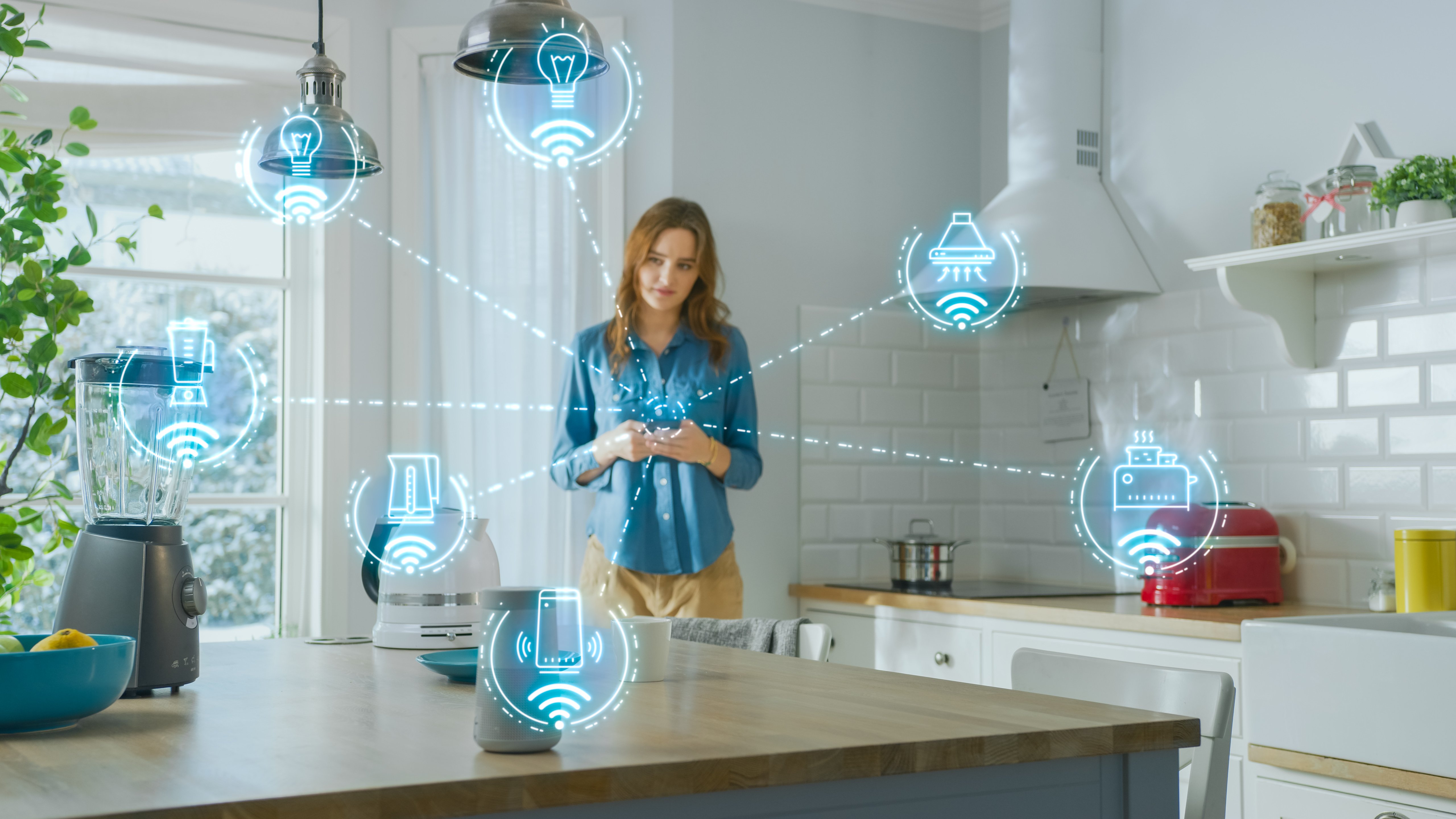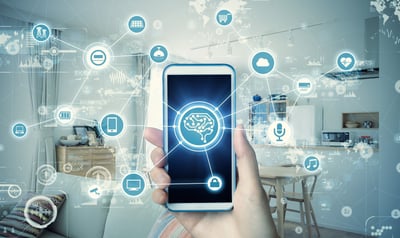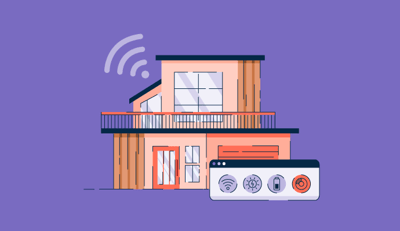
IoT devices allow us to take internet connectivity wherever we go. There are thousands of different types of IoT devices to create seamless experiences where we work and play, and in enterprise, industrial, and medical applications.
If you’re new to the Internet of Things, this article will tell you everything you need to know about IoT devices. What are they? How do they work? And how can you take advantage of IoT devices? Let’s dive in.
There are many people alive today who remember the world before the internet. With the help of the Internet of Things, we are taking connectivity and computation closer to the edge than ever.
IoT devices are pieces of hardware programmed for a specific application that can transmit data over the internet and throughout networks. IoT devices come in many shapes, sizes, designs, and uses. Sensors, actuators, gadgets, appliances, and computational machines all fall under the umbrella of the IoT.
Where PCs and other installations are not portable, IoT devices are small digital machines users can take virtually anywhere. They help people collect and make sense of data gathered from the environment with the help of machine learning AI.
Some of the most popular IoT devices include home security devices like Ring Cameras, smart home devices like Amazon Alexa or Google Nest, and even smartwatches.
IoT devices are designed for an array of applications. They allow people to live active lives with the help of medical devices and implants, help avoid disruptions and bottlenecks for business operations with sensors and predictive analytics, and even allow you to change your home’s temperature from a remote location.
A technical understanding of the ins and outs of the Internet of Things isn’t necessary to know how IoT devices can simplify the lives and activities of humans.
An IoT device is essentially a mini-computer that sends information to the cloud. The cloud then processes the information and decides what to do with it. For example, the cloud software may choose to send an alert, adjust a sensor, or display a notification depending on the data transmission.
Most IoT devices are developed to work with data automatically without any human input besides programming. However, there is a user interface with varying degrees of functionality. For example, some tasks may require users to give the “okay” to perform actions, while others can perform tasks automatically.
The user’s adjustments through the user interface are sent back through the IoT system and tell the device what to do next. That could be ignoring the alert, recording an anomaly, or sending a message to personnel.
To better understand how IoT devices work, let’s look at how an IoT system functions. Four components make up an integrated IoT system and allow IoT devices to perform tasks according to their programming:
Let’s explore each component in detail.
IoT devices and sensors start by collecting data from the environment. This can mean gauging temperature or barometric pressure, learning information from a video lecture, or keeping track of specific operations.
There are many ways that IoT devices collect this kind of information and data from their surroundings. For example, cameras, accelerometers, and GPS are all ways that devices can collect data to analyze and process. A smart home device listens to your voice, a motion sensor detects vibration patterns in heavy machinery, and a biological sensor is a device that can record several biological functions such as heart rate, acidity, and other chemical data.
Once an IoT device has collected data from the environment via sensors, it sends that information to the cloud to be processed. How that data gets to the cloud is through connectivity. There are several methods for connecting IoT devices to the cloud, such as WiFi, Bluetooth, satellite, cellular, and 5G.
How a device connects to the cloud depends on its specific IoT application, the kind of information being collected, and how that information will be used. A device without network connectivity can’t operate as an IoT device. Put another way, data collected on IoT devices are useless unless it can be sent to the cloud for processing. Connectivity is an essential feature of the Internet of Things.
When the data collected from a connected IoT device arrives in the cloud, it’s time to process it. Computers cannot communicate qualitative information well yet and rely on strict parameters to read, process, analyze, and take action on inputs. Data processing is where the cloud converts raw data into a machine-readable form so that the IoT device knows what should happen next.
IoT devices are programmed to sense and understand certain datasets to carry out specific functions and tasks based on that information. Data processing is how the cloud reads and makes sense of data. Sometimes this is a simple process like ensuring the temperature is at an adequate level, or it could be more complex, like using computer vision to identify safety hazards.
Without a way to use the data, what good is it? That’s why most IoT devices have some sort of user interface (UI) where people can interact with the device. After the data is processed, the UI generates and offers output to the user. There are many ways that an IoT device can deliver a result.
For example, a business owner can receive a text alert when a motion is detected at their location after hours. An IoT device may display an alert if the temperature within a cold storage unity is too high, or a pre-programmed protocol can be automatically launched if the parameters for action have been reached.
The user interface is how users can communicate with the IoT device and tell it what to do next if there is no automatic protocol.
The Internet of Things is a somewhat elusive term since it covers a broad category of devices and sensors. Several subcategories carry out specific tasks for various uses and industries within it. Here is a brief look into how IoT devices are present in our everyday lives.
Home security and smart home IoT devices are increasingly popular among consumers. They use natural language processing AI to understand questions and commands to do tasks like play music, shop online, and provide home security services. Here are some of the ways the Internet of Things is impacting home security:
The Internet of Things is changing how industries manufacture, transport, and maintain their assets and materials. IoT devices combined with Industrial IoT software help companies keep track of resources, usage, and product quality while providing opportunities to automate specific tasks and generate actionable insights about the supply chain. Here are some popular IIoT (Industrial Internet of Things) devices:
There are numerous wearable IoT devices in the healthcare and fitness category that perform various functions based on biological inputs. The IoT also offers healthcare organizations a way to streamline access to patient charts and treatment data, automatically load biometric data, billing, research, and improve patient care.
Here are a few examples of the kinds of IoT devices that are used in healthcare and fitness:
Fintech is becoming increasingly popular as consumers demand more convenience and accessibility for their favorite banking services. The financial services sector is typically quick to adopt new tech, and numerous financial institutions utilize IoT technologies to enhance the customer experience. Here are just a few examples:
Augmented reality (AR) and virtual reality (VR) are popular buzzwords right now, with Meta and Web 3.0 concepts beginning to take shape. The idea is that users can wear a device enabling them to interact with software connected to the IoT and create virtual experiences in the real world.
Gaming is one of the most widespread use cases for VR and AR, but other industries are getting in on the action, including fitness, healthcare, and education. Here are some examples of the types of AR and VR IoT devices:
The rise of connected IoT devices has sparked a new era of tech trends. According to the Worldwide Edge Infrastructure Forecast, IoT edge infrastructure is positioned to become one of the main engines for growth in the SSD market. IoT devices are evolving as innovators continue to develop new tools that connect businesses with crucial data sets.
IoT devices have boomed in the consumer market over the past decade. In 2021, 46 billion connected devices were used, up from only a billion in 2011.
Let’s discuss some of the IoT device trends driving the progression of this emerging technology.
5G connectivity makes sense in the era of the Internet of Things. More bandwidth is a must when it comes to the rapidly expanding IoT. That way, numerous devices can connect across networks and still expect real-time connectivity. 5G’s increased bandwidth can handle large amounts of data without compromising speed. And it helps improve AR/VR experiences without lagging or buffering.
AI functions like machine learning are key to the power behind IoT devices. In the healthcare industry, professionals are using AI algorithms to gather information and monitor patient care, analyze data for research, and use that information to model and predict the progression of diseases and care paths. With enhanced clinical workflows and streamlined GDPR-compliant data collection, more patient-centric healthcare models are emerging with less time spent in the lab and more time spent caring for patients.
Consumers are embracing wearable technologies in several ways. Smart tech like smartwatches and smart home devices are changing how we interact with our world. Meta’s new VR goggles promise a new way to work, play, shop, and hang out. And the healthcare field is utilizing more wearable tech to monitor and treat patients.
Many IoT tools, sensors, and other devices are being developed for several uses across industries to make operations safer, more productive, and more efficient overall. However, many organizations are still juggling legacy systems running on outdated hardware. Bundled IoT solutions for enterprises offer companies an opportunity to make a significant leap toward the future by providing turnkey IoT devices, software, training, deployment, and support.
IoT devices make business intelligence highly accessible for organizations. Predictive analytics analyzes data to predict future business trends and makes suggestions based on these insights. It enhances decision-making with strategic forecasting to discover growth opportunities, reduce costs, and optimize operations. Businesses can also use it in network monitoring, risk assessments, customer retention, maintenance, and fraud detection.
Before we wrap up, let’s briefly recap some of the advantages and disadvantages of IoT devices. Some of the benefits of IoT devices include:
On the other hand, there are a few disadvantages for IoT devices to overcome:
The IoT is creating new types of software solutions that are launching enterprises into the Digital Age with full force. IoT devices are designed to collect specific information and automatically carry out a task via the user interface. These connected devices can help organizations gain business insights, streamline operations, and develop new business models.
There are many new ways that people can interact with IoT devices. And in fields such as manufacturing and healthcare, the impact can be far-reaching. Faster and more accurate insights mean better outcomes for customers, which in some cases is a matter of life and death.
Of course, IoT device technology is still developing, and there are drawbacks that should be considered by any organization looking to enhance operations with the Internet of Things. In the court of public opinion, the pros tend to outweigh the cons. This is just the beginning of a new era of enterprise IoT connectivity.
If you own an IoT device, it's important to keep it - and your data stored within - safe. Learn how to secure your IoT devices today.
Nahla Davies is a software developer and tech writer. Before devoting her work full time to technical writing, she managed – among other intriguing things – to serve as a lead programmer at an Inc. 5,000 experiential branding organization whose clients include Samsung, Time Warner, Netflix, and Sony.
Generative artificial intelligence (AI) infrastructures make it easier to develop and deploy...
 by Sagar Joshi
by Sagar Joshi
Today, the Internet of Things (IoT) is no longer an emerging trend but rather well established...
 by Yamna Khan
by Yamna Khan
Welcome to the era of the Internet of Things (IoT).
 by Sagar Joshi
by Sagar Joshi
Generative artificial intelligence (AI) infrastructures make it easier to develop and deploy...
 by Sagar Joshi
by Sagar Joshi
Today, the Internet of Things (IoT) is no longer an emerging trend but rather well established...
 by Yamna Khan
by Yamna Khan


